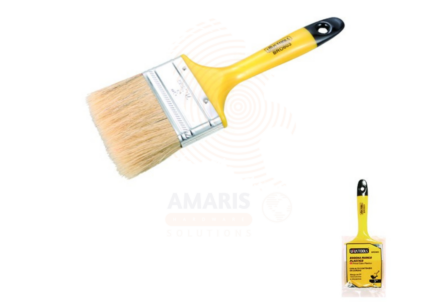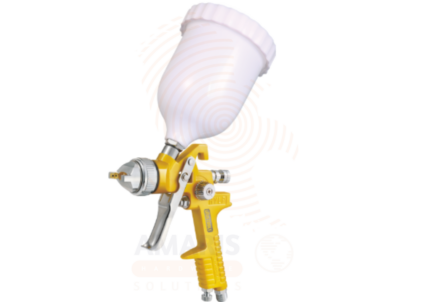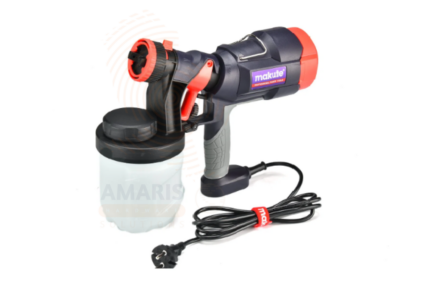Teles Coping Extension Poles
WhatsApp Order
A telescoping extension pole is a versatile tool designed for extension and retraction, typically used to reach elevated areas or extend the reach of various devices and attachments. It consists of nested tubular sections that can slide into one another, allowing for adjustable length. The telescoping mechanism enables users to easily extend or retract the pole to the desired length, providing convenience and flexibility in applications such as painting, cleaning, photography, or other tasks where an extended reach is necessary.
Description
USES OF A TELESCOPING EXTENSION POLES
- Painting and Decorating:
- Telescoping poles are commonly used for painting walls and ceilings, allowing users to reach high areas without the need for ladders or scaffolding.
- Cleaning:
- Window washing and cleaning gutters become safer and more accessible with telescoping extension poles. They eliminate the need to climb ladders for routine maintenance.
- Photography and Filmmaking:
- Photographers and filmmakers often use extension poles to mount cameras for elevated shots, capturing unique perspectives and angles.
- Lighting and Fixture Installation:
- Electricians and maintenance professionals use extension poles to install or replace light fixtures, bulbs, and other electrical components in high-ceiling areas.
- Pruning and Gardening:
- Telescoping poles equipped with pruning attachments are useful for reaching and trimming branches on tall trees without the need for a ladder.
- Window Treatments:
- Installing or adjusting curtains, blinds, or other window treatments in high or hard-to-reach windows is made easier with telescoping extension poles.
- Flagpole Maintenance:
- Telescoping poles are commonly used for maintaining and adjusting flagpoles, making it easy to raise or lower flags without the need for additional equipment.
- Construction and Inspection:
- Inspecting construction sites, buildings, or other structures often involves reaching heights that are challenging to access. Telescoping poles can be used for inspections and assessments.
- Sports Equipment Retrieval:
- Retrieving balls or other sports equipment stuck in high places, such as on roofs or in trees, can be accomplished using telescoping poles.
- Cable Management:
- In the field of audiovisual and event setup, telescoping poles are utilized for managing cables and wires by guiding them along ceilings or walls.
- Cleaning Vehicles:
- Telescoping poles with wash brush attachments are used for cleaning the roofs and upper surfaces of vehicles, RVs, or boats.
- Surveying and Mapping:
- Surveyors may use telescoping poles to mount surveying equipment for topographic mapping or measurements in challenging terrain.
- HVAC Maintenance:
- HVAC technicians can use telescoping poles to reach and adjust vents, ducts, or other components in elevated areas.
SAFETY HANDLING PRECAUTIONS
- Inspect the Pole:
- Before each use, inspect the telescoping pole for any signs of damage, such as bent or cracked sections. Ensure that the locking mechanisms are in good working order.
- Follow Manufacturer's Guidelines:
- Adhere to the manufacturer's instructions and guidelines for proper use and maintenance of the telescoping pole. This includes weight limits, recommended applications, and any specific safety precautions.
- Wear Personal Protective Equipment (PPE):
- Depending on the task, wear appropriate personal protective equipment, such as gloves, safety glasses, and non-slip footwear. If working at heights, consider using a safety harness.
- Check the Work Area:
- Clear the work area of obstacles and ensure there are no tripping hazards. Be mindful of overhead obstructions, power lines, or other potential hazards.
- Secure the Base:
- If the telescoping pole is used on a slippery or uneven surface, secure the base to prevent accidental movement. Use stabilizers or non-slip mats as needed.
- Maintain Proper Balance:
- Maintain a stable and balanced stance when using the telescoping pole. Avoid overreaching, and keep your center of gravity over the base of support to prevent tipping.
- Avoid Electrical Hazards:
- Be aware of nearby electrical lines or power sources. Ensure that the telescoping pole and any attachments do not come into contact with live electrical components.
- Use the Right Attachment:
- When using attachments such as paint rollers, window cleaning tools, or other accessories, make sure they are securely attached according to the manufacturer's instructions.
- Be Mindful of Weather Conditions:
- Avoid using telescoping poles in adverse weather conditions such as strong winds, rain, or thunderstorms, as these can increase the risk of accidents.
- Follow Safe Descending Procedures:
- When retracting the telescoping pole, do so carefully to avoid sudden collapses. Use a controlled and steady motion to prevent injuries.
- Communication:
- If working with a team, establish clear communication to coordinate movements and activities. Ensure that everyone is aware of the location and actions of others.
- Training and Familiarity:
- Ensure that users are properly trained on the correct use of telescoping poles and any associated equipment. Familiarity with the specific model being used is essential for safe operation.
Related products
Electric Spray Gun
PRODUCT DESCRIPTION
An electric spray gun is a handheld device powered by electricity that utilizes a motor-driven pump or turbine to atomize liquid coatings, such as paint or varnish, into a fine mist. This fine spray is then evenly and efficiently applied to surfaces, providing a smooth and uniform finish. Electric spray guns are commonly used in various industries and DIY applications for tasks such as painting walls, furniture, automotive components, and other surfaces requiring a professional and even coating. The electric power source distinguishes them from other types of spray guns that may be powered by compressed air or other means.
Electric Spray Gun
PRODUCT DESCRIPTION
An electric spray gun is a handheld device powered by electricity that utilizes a motor-driven pump or turbine to atomize liquid coatings, such as paint or varnish, into a fine mist. This fine spray is then evenly and efficiently applied to surfaces, providing a smooth and uniform finish. Electric spray guns are commonly used in various industries and DIY applications for tasks such as painting walls, furniture, automotive components, and other surfaces requiring a professional and even coating. The electric power source distinguishes them from other types of spray guns that may be powered by compressed air or other means.
Paint Brush Plastic Handle
A Paint Brush Plastic Handle is a hand tool designed for applying paints, varnishes, and coatings smoothly and evenly on surfaces. It features synthetic or natural bristles attached to a durable plastic handle that offers a comfortable grip and resistance to solvents and water. Suitable for use with water-based and oil-based paints, this brush is commonly used in painting walls, furniture, crafts, and DIY projects. The plastic handle is lightweight, easy to clean, and designed to prevent slippage, making it ideal for both professional painters and home users.
Paint Roller Refill
PRODUCT DESCRIPTION
A paint roller refill refers to a replaceable cylindrical component of a paint roller system used in painting applications. It typically consists of an absorbent material, such as foam or fabric, attached to a core, and is designed to absorb and evenly distribute paint onto surfaces when attached to a paint roller frame. The refill is used to reload the roller with paint for continued application, making it an essential part of the paint roller apparatus for efficient and smooth painting.
Paint Spray Gun – Copper Nozzle
PRODUCT DESCRIPTION
A paint spray gun with a copper nozzle is a tool used in the application of paint or coatings onto various surfaces. The paint spray gun utilizes compressed air to atomize and propel paint particles through the copper nozzle, creating a fine spray. The copper construction of the nozzle provides durability and resistance to corrosion. The nozzle's design and material contribute to the precision and efficiency of the spray pattern, allowing for controlled and even distribution of paint, resulting in a smooth and professional finish on surfaces such as walls, furniture, or automotive components.
Paint Spray Gun standard nozzle
A Paint Spray Gun Standard Nozzle is a precision tool designed to atomize and apply paint or coating materials evenly over surfaces using compressed air or an electric pump. The nozzle controls the spray pattern, flow rate, and paint particle size, ensuring a smooth, consistent finish. Suitable for automotive, industrial, and home painting projects, this nozzle fits various spray guns and is made from durable materials to withstand solvents and frequent use. It enables efficient and professional-quality painting with minimal overspray and waste.
Spray Gun
A spray gun is a handheld device or tool that utilizes compressed air or other pressurized gases to atomize and propel liquid substances, typically paint, coatings, or other materials, onto a surface. This process allows for an even and controlled application of the substance, producing a fine mist or spray that covers the target area uniformly. Spray guns are commonly used in various industries, including automotive, woodworking, and manufacturing, for tasks such as painting, finishing, and coating surfaces efficiently and with precision.
Spray Gun Lance
A spray gun lance is a component of a spraying system, typically used in applications such as agriculture, gardening, automotive refinishing, or industrial coatings. It is a long, slender extension attached to a spray gun, allowing the user to apply liquids, such as paint, pesticides, or cleaning solutions, from a distance. The spray gun lance directs the flow of the liquid and provides control over the application process, enabling precise and targeted spraying. It is a versatile tool used in various industries for efficient and uniform coating or treatment of surfaces.


 Acrylic Sealants
Acrylic Sealants Construction Adhesives
Construction Adhesives Double-Sided Tape
Double-Sided Tape Duct Tape
Duct Tape Electrical Tape
Electrical Tape Epoxy & Resins
Epoxy & Resins Masking Tape
Masking Tape
 Automotive Wrenches & Socket Sets
Automotive Wrenches & Socket Sets Battery Chargers & Jump Starters
Battery Chargers & Jump Starters Car Jacks & Stands
Car Jacks & Stands Car Wash & Detailing Products
Car Wash & Detailing Products Diagnostic Tools
Diagnostic Tools Tire Inflators
Tire Inflators Vehicle Lighting
Vehicle Lighting Oil & Lubricants
Oil & Lubricants
 Adhesives & Sealants
Adhesives & Sealants Bricks & Blocks
Bricks & Blocks Cement & Concrete
Cement & Concrete Drywall & Plaster
Drywall & Plaster Flooring (Tiles, Wood, Laminate)
Flooring (Tiles, Wood, Laminate) Lumber & Plywood
Lumber & Plywood Paints, Primers & Coatings
Paints, Primers & Coatings Insulation Materials
Insulation Materials Roofing Materials
Roofing Materials
 Circuit Breakers
Circuit Breakers Electrical Cables & Wires
Electrical Cables & Wires Switches & Sockets
Switches & Sockets Fuses & Relays
Fuses & Relays Connectors & Terminals
Connectors & Terminals Electrical Boxes & Panels
Electrical Boxes & Panels Conduit & Fittings
Conduit & Fittings Lighting Fixtures & Bulbs
Lighting Fixtures & Bulbs Extension Cords & Power Strips
Extension Cords & Power Strips
 Anchors
Anchors Bolts
Bolts Clips & Clamps
Clips & Clamps Screws
Screws Nuts
Nuts Washers
Washers Rivets
Rivets Nails
Nails Threaded Rods
Threaded Rods
 Hammers
Hammers Measuring Tools (Tapes, Levels, Calipers)
Measuring Tools (Tapes, Levels, Calipers) Screwdrivers
Screwdrivers Pliers & Cutters
Pliers & Cutters Saws & Blades
Saws & Blades Chisels & Punches
Chisels & Punches Allen Keys & Hex Keys
Allen Keys & Hex Keys Ratchets & Socket Sets
Ratchets & Socket Sets Wrenches & Spanners
Wrenches & Spanners
 Power Tool Accessories (Blades, Bits, Discs)
Power Tool Accessories (Blades, Bits, Discs) Rotary Tools
Rotary Tools Saws (Circular, Jigsaw, Reciprocating)
Saws (Circular, Jigsaw, Reciprocating) Drills & Drivers
Drills & Drivers Grinders & Sanders
Grinders & Sanders Heat Guns
Heat Guns Nail Guns
Nail Guns Impact Wrenches
Impact Wrenches Batteries & Chargers
Batteries & Chargers
 Pipes & Fittings (PVC, Copper, PEX)
Pipes & Fittings (PVC, Copper, PEX) Plumbing Tools
Plumbing Tools Pumps & Motors
Pumps & Motors Sealants & Adhesives for Plumbing
Sealants & Adhesives for Plumbing Valves & Taps
Valves & Taps Water Heaters
Water Heaters Drainage Systems
Drainage Systems Faucets & Fixtures
Faucets & Fixtures Hoses & Tubing
Hoses & Tubing
 Hinges & Latches
Hinges & Latches Hooks & Brackets
Hooks & Brackets Window Hardware
Window Hardware Chains & Cables
Chains & Cables Casters & Wheels
Casters & Wheels Shelving & Storage Systems
Shelving & Storage Systems Door Handles & Locks
Door Handles & Locks Drawer Slides & Cabinet Hardware
Drawer Slides & Cabinet Hardware
 Personal Protective Equipment (PPE)
Personal Protective Equipment (PPE) Respirators & Masks
Respirators & Masks Safety Glasses
Safety Glasses Safes
Safes Security Cameras
Security Cameras Gloves
Gloves Helmets
Helmets Ear Protection
Ear Protection Fire Safety Equipment
Fire Safety Equipment Locks & Padlocks
Locks & Padlocks Motion Sensors & Alarms
Motion Sensors & Alarms
 Garden Fencing
Garden Fencing Garden Furniture Hardware
Garden Furniture Hardware Lawn Mowers
Lawn Mowers Trimmers & Edgers
Trimmers & Edgers Shovels & Spades
Shovels & Spades Rakes & Hoes
Rakes & Hoes Pruning Shears & Loppers
Pruning Shears & Loppers Watering Systems (Hoses, Sprinklers, Nozzles)
Watering Systems (Hoses, Sprinklers, Nozzles)
 Interior Paints
Interior Paints Paint Brushes & Rollers
Paint Brushes & Rollers Paint Strippers & Thinners
Paint Strippers & Thinners Paint Trays & Accessories
Paint Trays & Accessories Exterior Paints
Exterior Paints Spray Paints
Spray Paints Primers & Undercoats
Primers & Undercoats Varnishes & Stains
Varnishes & Stains
 Gaskets & Seals
Gaskets & Seals Hydraulic Fittings
Hydraulic Fittings Industrial Fasteners
Industrial Fasteners Industrial Hoses
Industrial Hoses Lubricants & Greases
Lubricants & Greases Metal Sheets & Bars
Metal Sheets & Bars Bearings & Bushings
Bearings & Bushings Belts & Pulleys
Belts & Pulleys
 HVAC Filters
HVAC Filters Insulation for HVAC
Insulation for HVAC Air Conditioners
Air Conditioners Refrigerants
Refrigerants Ventilation Ducts & Fittings
Ventilation Ducts & Fittings Thermostats & Controllers
Thermostats & Controllers Fans & Blowers
Fans & Blowers
 Pegboards & Hooks
Pegboards & Hooks Shelving Units
Shelving Units Storage Bins & Containers
Storage Bins & Containers Toolboxes & Tool Chests
Toolboxes & Tool Chests Workbenches
Workbenches Drawer Organizers
Drawer Organizers Labeling Supplies
Labeling Supplies
 Welding Accessories (Clamps, Brushes)
Welding Accessories (Clamps, Brushes) Welding Electrodes & Rods
Welding Electrodes & Rods Welding Helmets & Gloves
Welding Helmets & Gloves Welding Machines
Welding Machines Soldering Irons & Stations
Soldering Irons & Stations Flux & Solder Wire
Flux & Solder Wire
 Generator Accessories
Generator Accessories Inverters
Inverters Portable Generators
Portable Generators Power Inverters
Power Inverters Transfer Switches
Transfer Switches Diesel & Gasoline Generators
Diesel & Gasoline Generators
 Transport Equipment: Carts, Dollies, and Hand Trucks
Transport Equipment: Carts, Dollies, and Hand Trucks Storage Solutions: Pallets, Racks, and Containers
Storage Solutions: Pallets, Racks, and Containers Lifting Equipment: Hoists, Cranes, and Jacks
Lifting Equipment: Hoists, Cranes, and Jacks Conveyors and Accessories: Belts and Rollers
Conveyors and Accessories: Belts and Rollers







